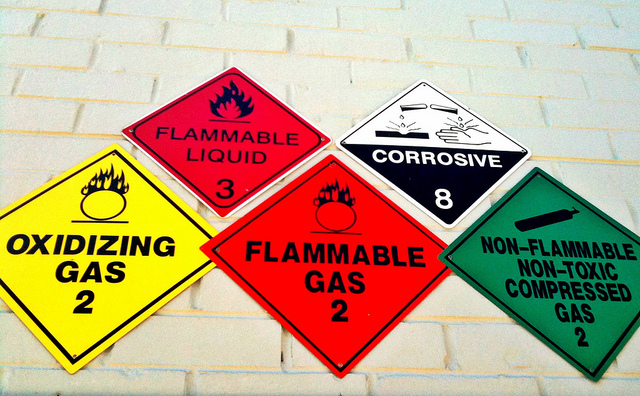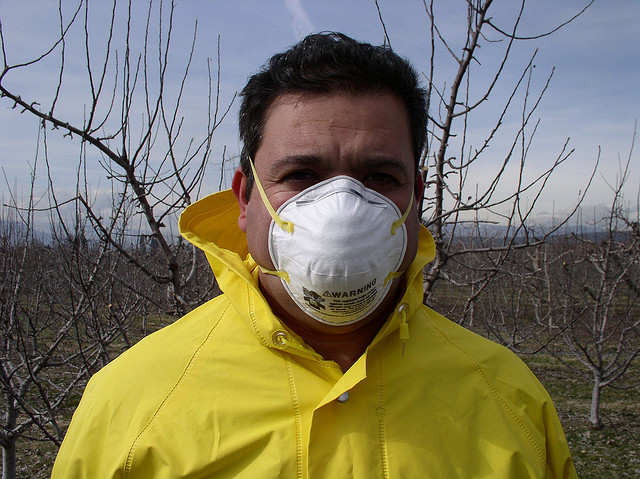On April 11, the D.C. Circuit Court of Appeals denied a petition by SeaWorld, which was seeking to overturn a citation and penalty issued by the Occupational Safety and Health Administration (OSHA) after a killer whale mauled and drowned one of the park’s trainers during a show (Seaworld of Florida, LLC v. Perez). OSHA had cited SeaWorld for violating the OSH Act’s Employer’s General Duty Clause, by failing to provide a workplace free of “free from recognized hazards that are causing or are likely to cause death or serious physical harm.” This decision reminds us that this often-neglected element of OSH compliance serves important worker safety goals.
Audit, Compliance and Risk Blog
Tags: Business & Legal, Employer Best Practices, Health & Safety, OSHA, Employee Rights, Environmental risks, EHS
EPA Proposes To Revise The Agricultural Worker Protection Standard
Posted by Jon Elliott on Wed, Mar 05, 2014
The US Environmental Protection Agency (EPA) administers a Worker Protection Standard (WPS) designed to protect workers exposed to agricultural pesticides. WPS is patterned after the Occupational Safety and Health Administration (OSHA's) Hazard Communication Standard (HCS) for workers in most industrial and commercial settings. EPA adopted the WPS in 1992, and just proposed its first revisions on February 20, 2014. Some of these changes incorporate revisions to HCS adopted by OSHA in 2012 (see my earlier blog), while others catch up on two decades of industrial hygiene and worker safety practices. Comments will be due 90 days after the proposal is published, with final approval to follow sometime later.
Tags: Business & Legal, Employer Best Practices, Health & Safety, OSHA, Employee Rights, Environmental risks, Environmental, EPA, Hazcom
When you think of dangerous industries to work in, which ones come to mind? Construction, mining, longshoring, maybe even letter carrying, are obvious, but did healthcare make the list?
Tags: Employer Best Practices, Health & Safety, OSHA, Employee Rights, Training, EHS, Workplace violence
The year 2013 has been another relatively quiet one for most environmental health and safety (EH&S) compliance personnel. Continuing differences in Congress have stymied would-be initiatives on both sides of the partisan aisles, so there were no meaningful legislative changes.
Tags: Health & Safety, OSHA, Environmental risks, Environmental, EHS, EPA, Hazcom, Transportation
An investigation by the U.S. Occupational Safety and Health Administration (OSHA) found that New Prime Inc. retaliated against a truck driver by blacklisting him in the commercial transport industry after he sought medical attention for a work-related back injury. When he was given doctor’s permission to return to work he opted to seek employment with other motor carriers only to discover his attempts to do so had been sabotaged by his previous employer, New Prime Inc. OSHA has ordered the motor carrier company to pay the former employee $100,994.24 in back wages and damages and take other corrective action.
Tags: Business & Legal, Employer Best Practices, Health & Safety, OSHA, Employee Rights, Hazcom
In response to what it describes as “an alarming increase” in worksite injuries and fatalities related to communication tower activities, the federal Occupational Safety & Health Administration (OSHA) recently issued a memorandum for regional administrators. Intensified upgrades to cellular infrastructure (to cite an example from a few years ago, preparation to introduce 3G service) are likely contributing to the toll: 14 incidents in just a few months of 2013, a total greater than that of the previous two years combined.
Tags: Employer Best Practices, Health & Safety, OSHA, Employee Rights, California Legislation, Training
OSHA: Is It Time To Update The Process Safety Management Standard?
Posted by Jon Elliott on Thu, Jan 09, 2014
The Occupational Safety and Health Administration’s (OSHA’s) Standard for Process Safety Management of Highly Hazardous Chemicals (usually referred to as “PSM”) in 1992, requires extensive risk assessments and reduction efforts by facilities where a significant incident involving these chemicals might have catastrophic consequences. OSHA adopted PSM in 1992, and has made only minor technical revisions in the ensuing two decades. However, several federal and state initiatives are developing recommendations and may lead to significant changes in 2014.
Tags: Employer Best Practices, Health & Safety, OSHA, Training, Environmental, EHS, Hazcom
December 1, 2013 marked the first major compliance deadlines for most employers to comply with revisions to the Occupational Safety and Health Administration's (OSHA's) Hazard Communication Standard (HCS or Hazcom) adopted by OSHA effective May 25, 2012. Hazcom provides basic chemical information in millions of workplaces in the U.S. (Canadian readers will be familiar with analogous Workplace Hazardous Materials Information System (WHMIS) requirements).
Tags: Corporate Governance, Health & Safety, OSHA, Training, Hazcom
Move Over Hazardous Chemicals … Here Comes Something Safer!
Posted by STP Editorial Team on Wed, Dec 04, 2013
American workers suffer more than 190,000 illnesses and 50,000 deaths annually as a result of working with and being exposed to tens of thousands of chemicals every day. Workplace chemical exposures have been linked to cancers, and other lung, kidney, skin, heart, stomach, brain, nerve, and reproductive diseases. While many of these chemicals are suspected of being harmful, only a fraction of them are regulated in the workplace.
Tags: Business & Legal, Health & Safety, OSHA, Environmental risks, Environmental, Hazcom
Alert: Upcoming Changes to Requirements for Safety Recalls
Posted by STP Editorial Team on Wed, Oct 23, 2013
Do you know about these changes? Do you know their effective dates? Is your company ready to comply with each and every change? If your answer to any of these is “no”, or you have no idea what this alert is about, you’ll want to see the Federal Register notice that announced and described these changes. A copy can be found here.
Tags: Business & Legal, Health & Safety, OSHA










